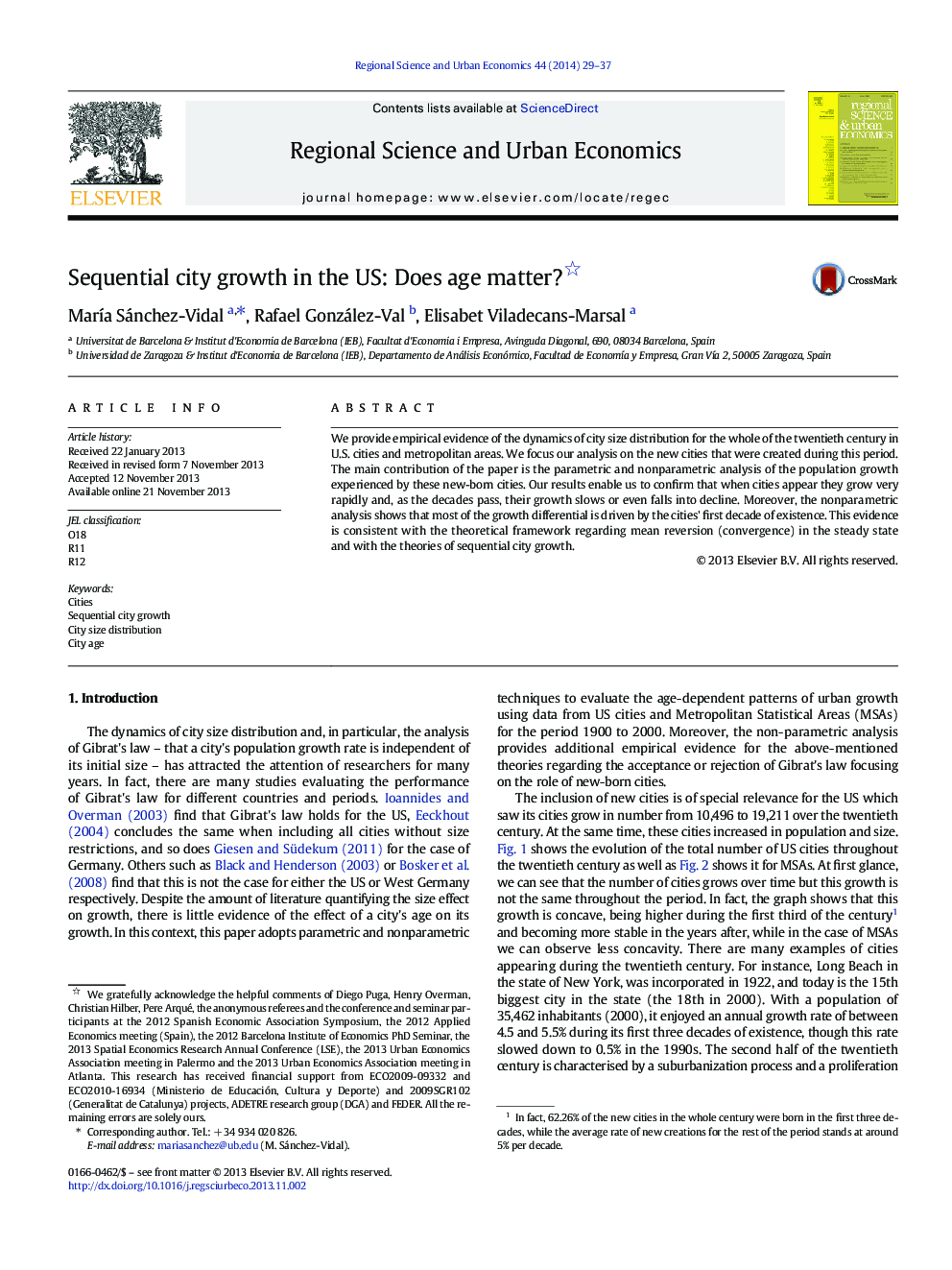| Article ID | Journal | Published Year | Pages | File Type |
|---|---|---|---|---|
| 983769 | Regional Science and Urban Economics | 2014 | 9 Pages |
•We analyse the impact of the age of a city on its growth rate.•We focus our analysis on the new-born cities on the U.S. for the twentieth century.•There exist differences on the growth rates of cities depending on their age.•We explore the hypothesis of the existence of mean reversion.•Mean reversion is confirmed for new-born cities especially for the youngest.
We provide empirical evidence of the dynamics of city size distribution for the whole of the twentieth century in U.S. cities and metropolitan areas. We focus our analysis on the new cities that were created during this period. The main contribution of the paper is the parametric and nonparametric analysis of the population growth experienced by these new-born cities. Our results enable us to confirm that when cities appear they grow very rapidly and, as the decades pass, their growth slows or even falls into decline. Moreover, the nonparametric analysis shows that most of the growth differential is driven by the cities' first decade of existence. This evidence is consistent with the theoretical framework regarding mean reversion (convergence) in the steady state and with the theories of sequential city growth.
